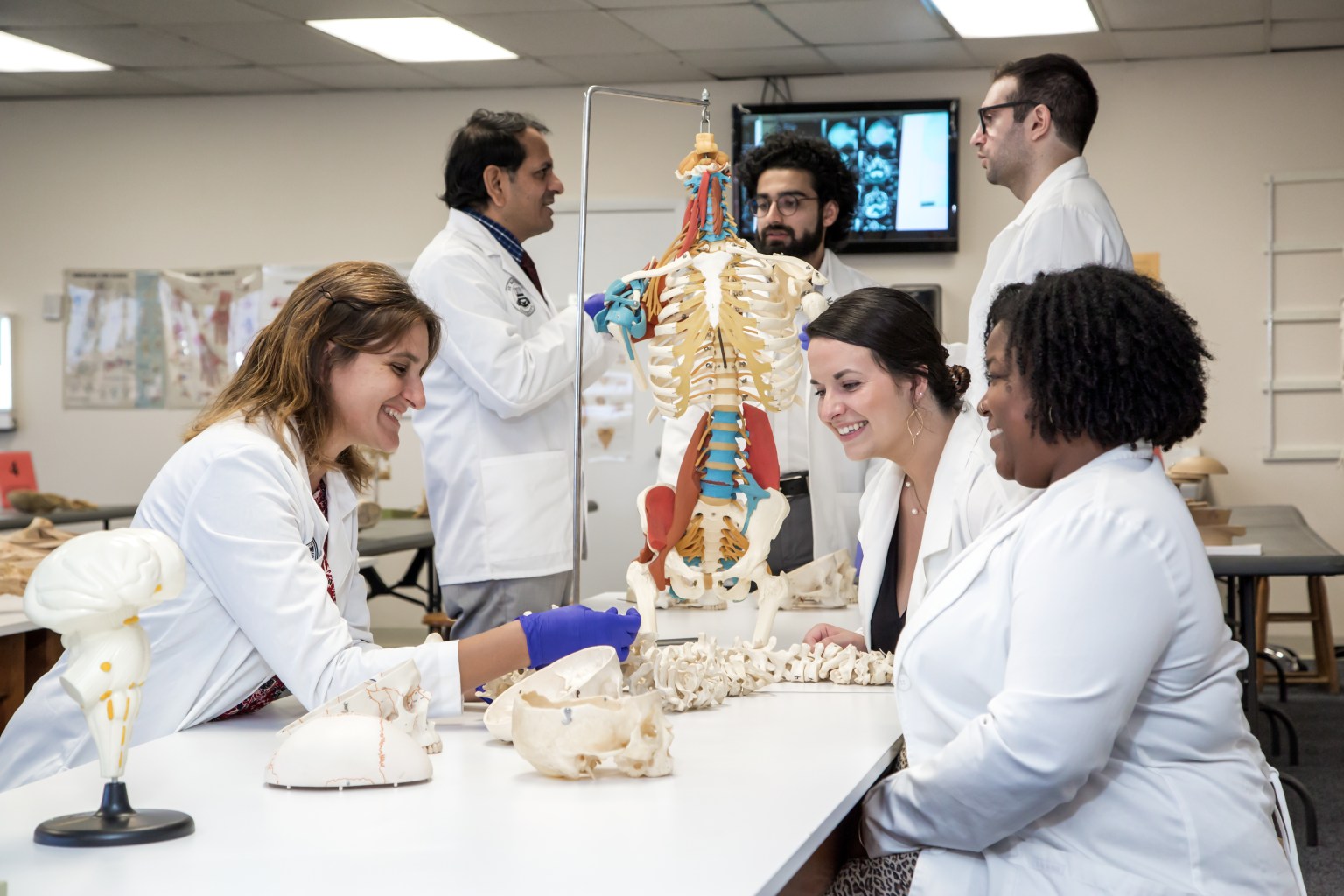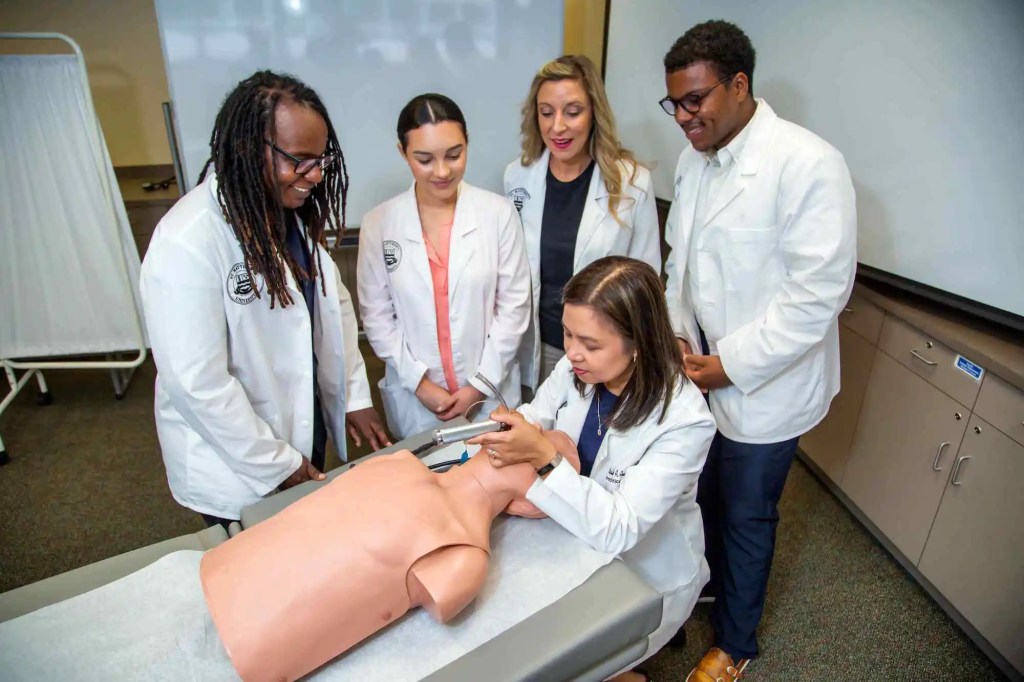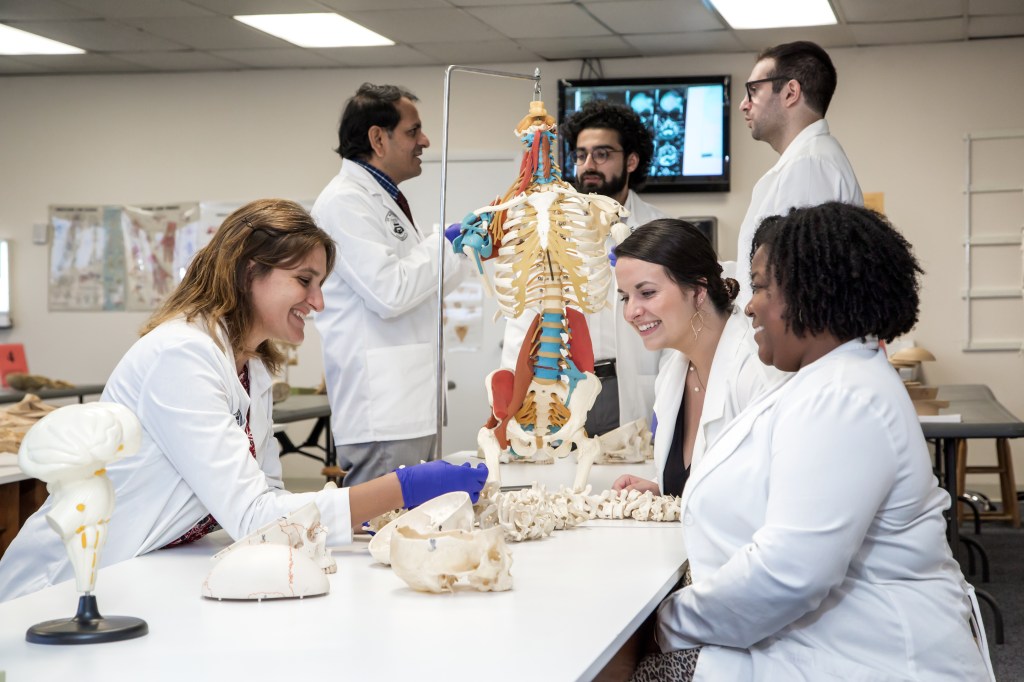
How to Study Anatomy in Medical School: Top Tips for Success
Discover how to approach the study of anatomy and develop successful learning habits that will help you master this crucial medical subject.
One of the most important things that aspiring physicians will need to do during their time in medical school is to learn anatomy. It is one of the most complex and difficult subjects to master, however, with the right approach, it can be achieved.
Below, we will share some tips that will help you study anatomy effectively and highlight why it’s such an important part of medical studies.
What Is Anatomy?
Anatomy is the study of the structure of the body’s organs and tissues. It includes both gross anatomy, which is the study of large structures visible to the naked eye, and microscopic anatomy, which is the study of structures that can only be seen with a microscope.
Anatomy includes all of the systems of the body, such as the respiratory, digestive, circulatory and nervous systems. Anatomy also encompasses other aspects of human physiology, such as embryology (the study of how humans develop in utero), histology (the study of tissues), immunology (the study of the body’s defense against disease) and many more. Anatomists use a variety of techniques to investigate the body, including dissection, computer tomography and magnetic resonance imaging.
Anatomy is a vital science that helps us to understand how the body works. It plays an important role in medicine, providing information that can be used to diagnose and treat diseases. It is also essential for medical research, helping scientists to develop new treatments for a variety of conditions.
The Difference Between Anatomy and Physiology
Anatomy and physiology are often confused, as they are two closely related fields of study.
One major difference between anatomy and physiology is their scope. Anatomy is the study of the structure of the body, while physiology is the study of how the body functions. Both disciplines are essential to our understanding of the human body. This means you cannot successfully study anatomy in medical school without understanding the role physiology plays as well.
Another difference is that anatomy is a static discipline, while physiology is dynamic. This means that anatomy deals with unchanging structures, while physiology looks at how these structures function in real-time.
Despite these differences, anatomy and physiology are interdependent. You cannot understand how the body works without first knowing its parts and how they are put together. Likewise, an understanding of body function is useless without a knowledge of the underlying structure. This is why many students choose to study both disciplines simultaneously.
Why You Need to Study Anatomy as a Medical Student
Anatomy provides the foundations for everything else that you will learn in medical school. A strong understanding of anatomy is necessary to build upon to understand more complex concepts later on.
Having a good grasp of anatomy is important for your future career as a doctor. Thorough knowledge of human anatomy is crucial for diagnosis, treatment and research purposes. It is essential for developing clinical skills. Thorough knowledge of anatomy is required to accurately perform a physical examination, for example. It is also necessary for many other medical procedures, such as injections, biopsies and surgeries.
Finally, studying anatomy can be enjoyable and fascinating in its own right. The human body is an incredible machine and there is a lot to learn about how it works. So, the best way to study anatomy is to embrace your natural curiosity as a medical student and dive into the details. With the right approach, you can develop a lifelong love for anatomy, as well as medicine more broadly.



How to Learn Anatomy
If you are or will be studying anatomy in medical school, here are a few top anatomy study tips.
1. Develop good study habits
It is important to develop structured study habits. This means setting aside time each week to learn independently and making use of all the resources you have available, such as lectures, online tools, and anatomy and physiology books. A good way to make sure you are studying consistently enough is to create a study schedule and stick to it.
2. Create a glossary
One way to make sure you understand the concepts you are learning is to create a glossary. This is a list of all the terms and concepts you need to know, with definitions and examples.
This will help you memorize the material and ensure that you understand it.
This is important as there are a lot of specific, anatomical terms, which can be easily confused. Having your own glossary will be a valuable resource to refer back to when you study for exams and can support you as you explore the best way to learn anatomy.
3. Break down your studies into sections
Another way to make studying anatomy easier is to break down your studies into more easily digestible sections. Trying to understand everything at once can be overwhelming. Instead, focus on one body system or region at a time. This will make the material more manageable and allow you to go more in-depth on each topic.
Many students asking how to study for anatomy and physiology find that compartmentalizing information by systems is one of the most effective approaches.
4. Use study aids
There are several study aids available that can make studying anatomy easier. These include flashcards, apps and websites. Making flashcards from all your notes is a great way to memorize key concepts, while apps and websites can provide interactive ways to learn the material.
If you’re wondering how to learn anatomy efficiently, combining traditional resources with digital tools can offer an engaging experience.
5. Think about function
When you are studying anatomy, it is important to think about anatomy interlinking with function. In other words, how the structures you are learning about actually work together in the body. This will help you understand the material on a deeper level.
This also helps answer the common student question: “Is anatomy hard?” — it’s only difficult when studied in isolation. When you connect structure with function, it becomes more logical and easier to grasp.
6. Test your knowledge regularly
One of the best ways to study anatomy is to test your knowledge regularly. This will help you identify any areas that you need to work on and it will also help you remember what you have learned. There are many ways to test your knowledge, such as quizzes, practice anatomy questions and studying past exam papers.
You could also try testing yourself by creating flashcards or diagrams. This is a great way to memorize the different parts of the body and their functions. You can test yourself or a fellow student to see how much you have learned, as well as reinforce the information — repetition is key.
As your exams approach, you might be wondering how to study anatomy for exam success. Well, regular self-testing is a vital part of that answer.
7. Get a study partner or join a study group
Having somebody to discuss the material with will help you understand it better and will make the process more enjoyable. You can also use your study partner/group to test each other on what you have learned and support each other to revise further when you need it.
Collaborative learning is a tried-and-true strategy that might also help you discover new study techniques for anatomy and physiology by seeing how others approach the subject.
8. Get plenty of practice
It’s important to get plenty of anatomy study practice. Dissecting cadavers is an essential part of learning anatomy and there are many other opportunities to get hands-on experiences, such as working with models and simulations. Many online resources can provide you with interactive anatomy study experiences.
Discover St. Matthew’s University
At St. Matthew’s University School of Medicine (SMUSOM), we offer a comprehensive MD program that provides students with the support and hands-on instruction they need to master their medical studies, including anatomy. Since 1997, more than 2,300 students have graduated from the program, and alumni go on to practice in the U.S., Canada and internationally.
To learn more about joining our community of care, feel free to contact us or get started today by learning how to apply. We also encourage you to check out our events page to discover when we’ll be in your area or hosting a webinar where you can learn more.
If you’d like some more insights today, check out this video testimonial from a recent SMUSOM graduate:
FAQs About Anatomy
Many students wonder “is anatomy hard” and the answer depends on your study habits and mindset. Studying anatomy involves memorising complex structures, which can be challenging at first. However, with the right approach, like using effective study techniques for anatomy and physiology, breaking topics into manageable sections and revisiting material regularly, it becomes much more approachable. Asking the right questions, like how to study anatomy effectively, is a great first step.
The study of anatomy will be a part of your journey throughout medical school, residency and beyond. It is always possible to enhance your understanding of the various human body structures and systems, and committed practitioners are dedicated to lifelong learning.
To memorize anatomy easily, start by using active learning strategies like spaced repetition and self-testing. Many students find flashcards, labelled diagrams and interactive apps helpful. Creating your own glossary and studying in chunks also improves retention. If you’re unsure how to study anatomy for exam conditions, practice with mock questions and review sessions. Finding the best way to study anatomy often comes down to combining repetition with understanding, not just memorisation.
The best source to study anatomy depends on your learning style. Many students benefit from well-structured anatomy and physiology textbooks, which offer clear explanations and diagrams. If you’re a visual learner, an anatomy and physiology book with illustrations or access to 3D models can make a big difference. Supplementing textbooks with videos, apps and peer discussion can also help you explore anatomy in a way that sticks. Use multiple sources to reinforce concepts from different perspectives.